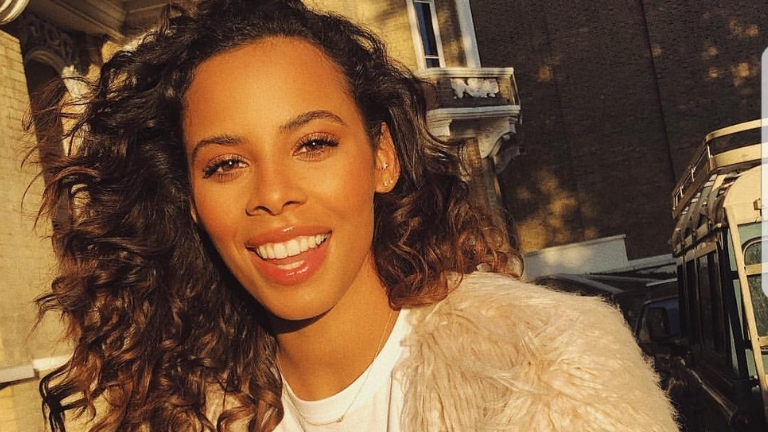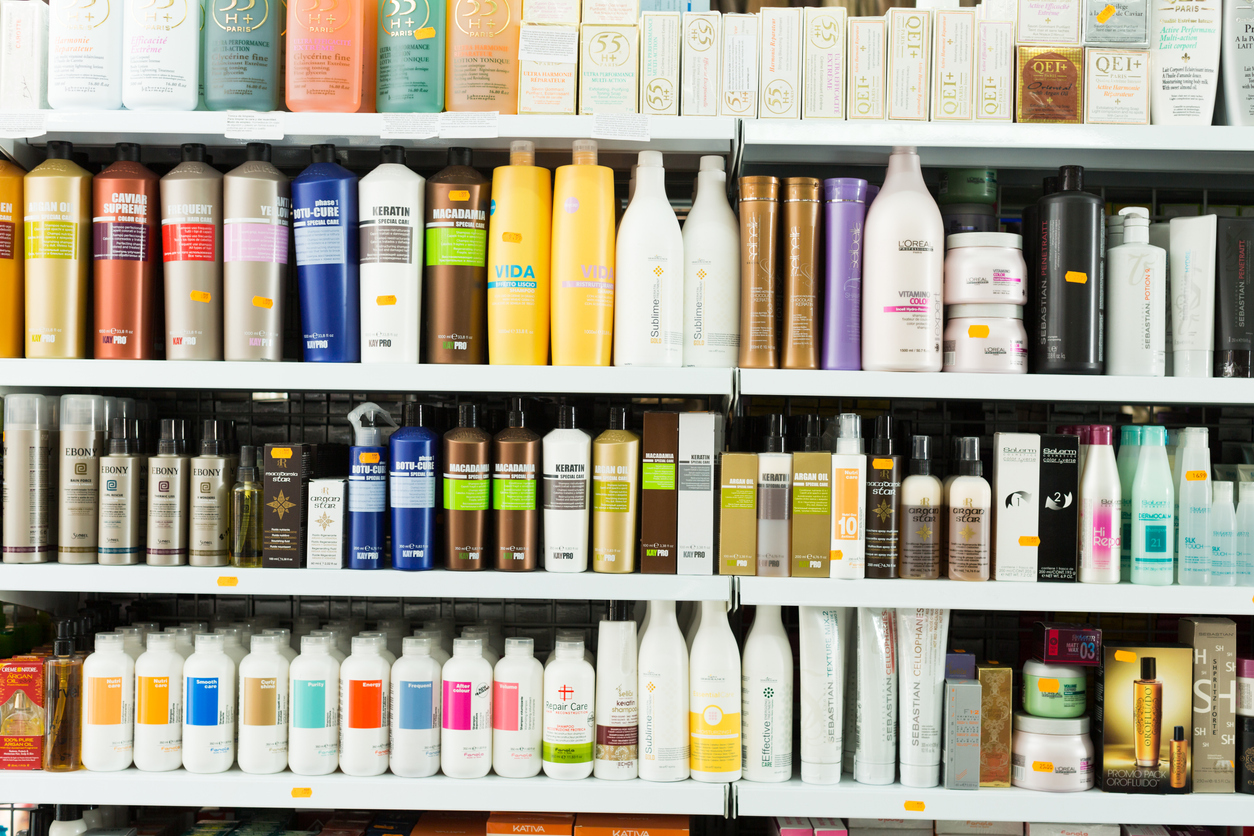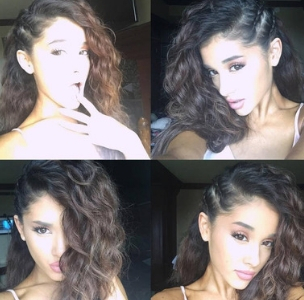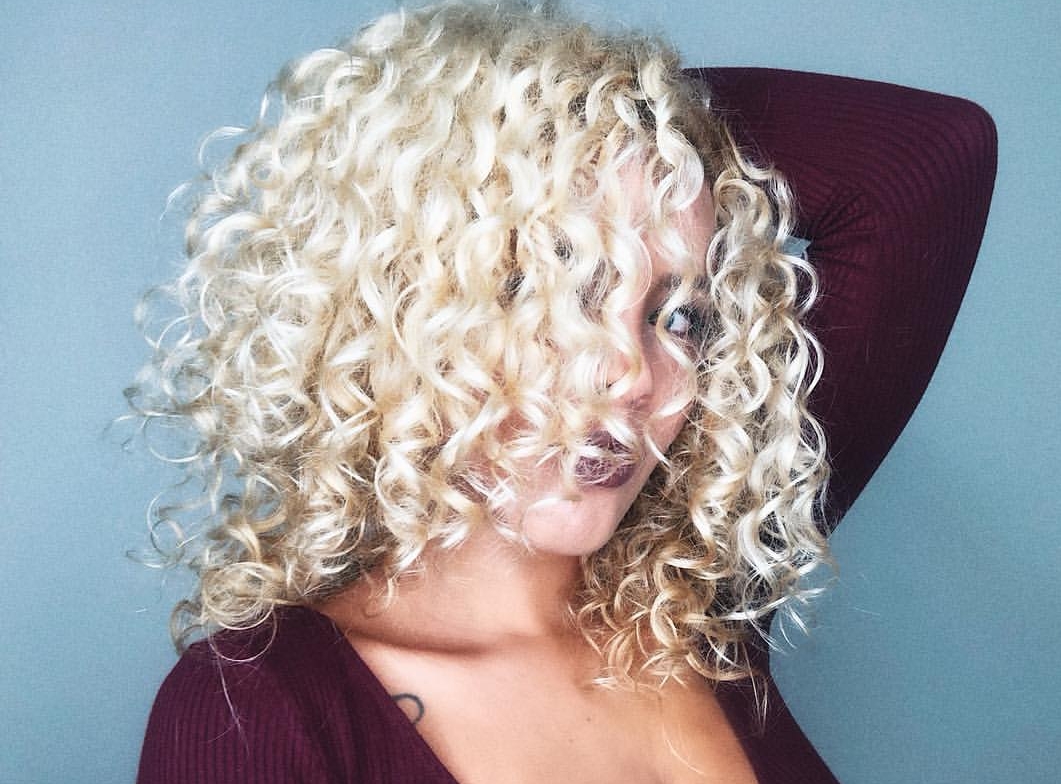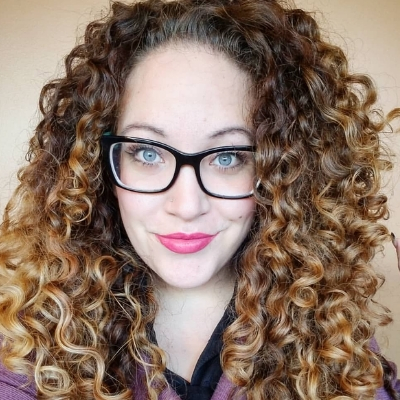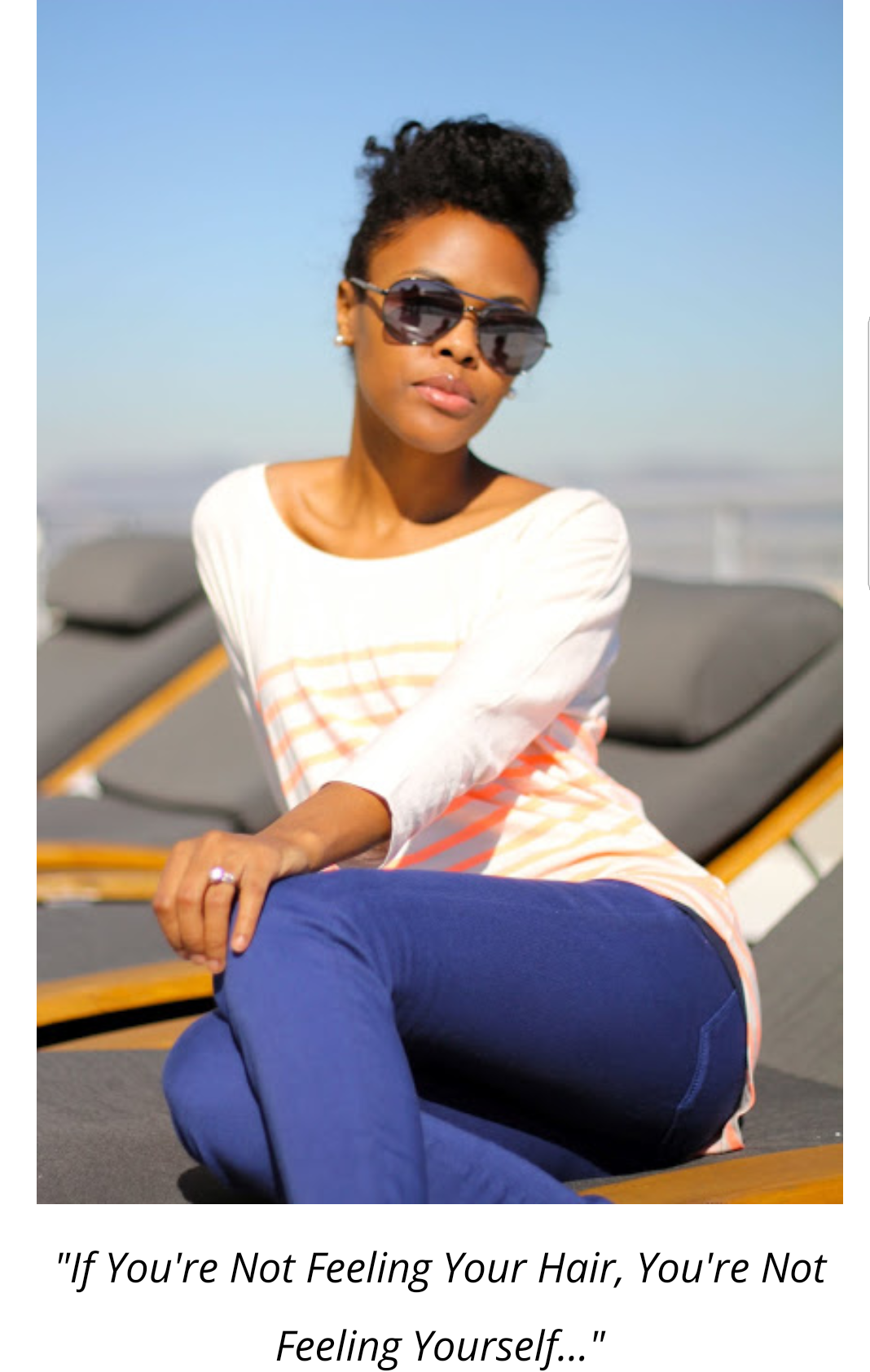Natural curly hair is getting seriously on trend with celebs like Thandie Newton rocking their natural hair, plus the online curly hair community is spreading like wildfire – here’s a beginner’s guide
At this year’s 76th Golden Globe awards, 46 year old actress Thandie Newton looked stunning in a shimmery sequined dress, donning some incredibly curly locks. The British beauty turned heads and certainly didn’t shy away from flaunting her voluminous and enviable curls.
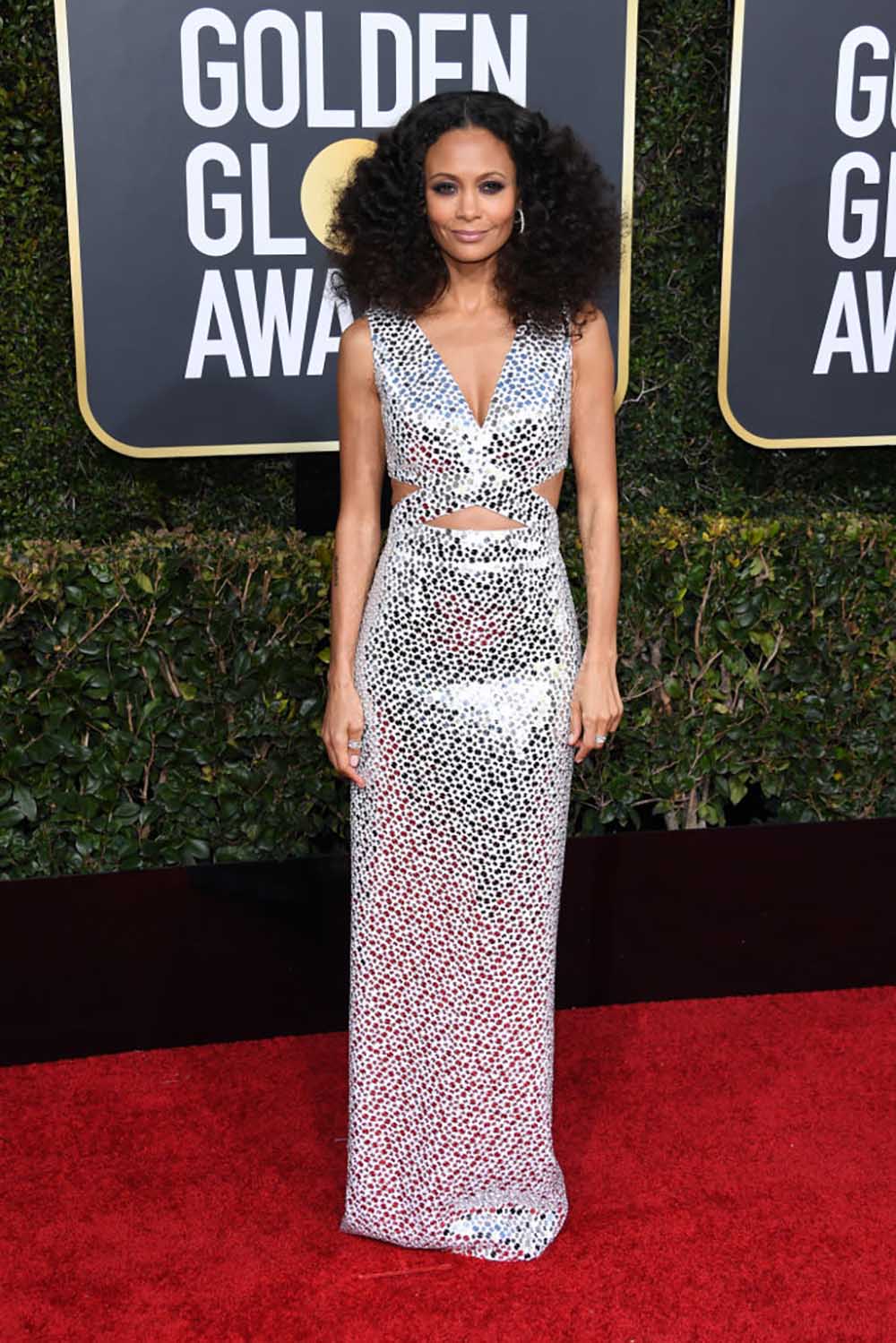
But many of us are not so confident about our natural hair, having been ridiculed or laughed at for our big, frizzy locks that not only defy beauty standards but also gravity.
Thankfully, curly girls are now fighting back by proudly ditching the blow-dries and wearing their hair natural and, thanks to social media and YouTube, an entire natural hair movement is well underway. We can now be part of a secret curly society (I’m not lying, there’s even a website with the same name).
Whatever your curl type and pattern (more on that below), curly hair is gorgeous and thanks to social media we can learn how to look after our hair from other curlies. That’s because curly girl rule number one is, the healthier the hair, the more beautiful (and frizz-free) the curls. That means goodbye straighteners, hello moisture.
More and more celebrities including Nicole Kidman, Mila Kunis and Ariana Grande are coming out of the curly hair closet. Kidman even wore her curls to the Hollywood Film Awards (and looked absolutely stunning, below).
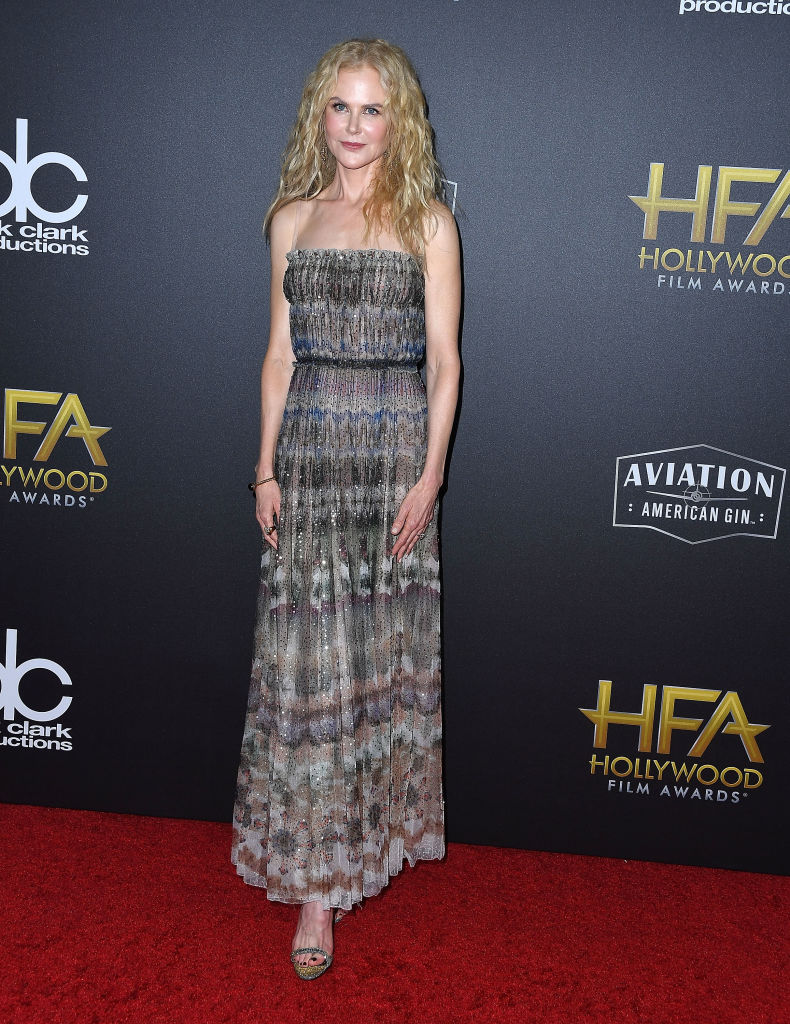
This goes beyond ‘just hair’. Black, Asian, Minority Ethic (BAME) women with curlier hair have experienced unfair treatment due to their hair for decades.
In the modern world, protective styles like weaves and braids have been considered ‘unprofessional’ and ‘problematic’ and in the last several years a natural hair movement has triumphed not only on social media but all over the world too with a number of lawsuits in the US against companies guilty of hair discrimination against curlies.
Even Rochelle Humes from The Saturdays (above) now proudly wears her hair curly after her daughter asked her why disney princesses all have straight hair. She started the popular hashtag on Instagram #CurlsLikeUs and a blog with the same name to bring curly girls advice, pictures and a space to share what works – and doesn’t – for them.
The beginner’s guide below brings you the most well-known terms, methods and knowledge you need to embrace your curly hair. Everything below has been popularised by the experiences of real women in the natural hair community.
While everyone’s hair is different and some products and techniques may not work for you, we’re sure you will find something that does.
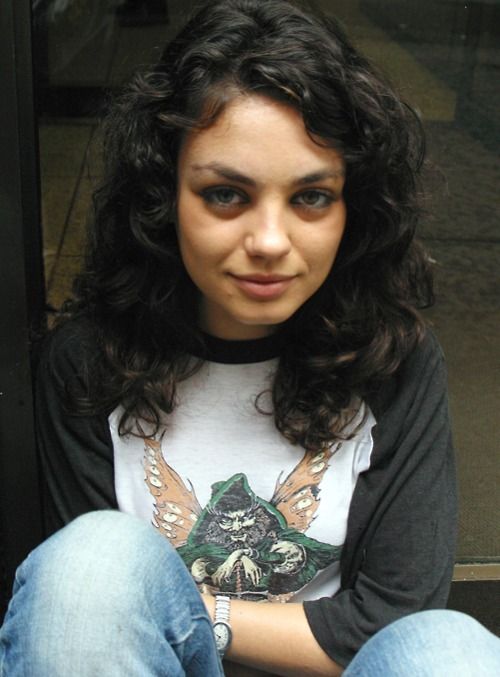
Washing and conditioning
Co-Washing – this is short for Conditioning Wash. We’ve been taught since childhood to always use shampoo on our hair. But shampoo can often contain chemicals known as sulphates that strip curly hair of its natural oils. And, because curly hair is naturally more dry than straight hair, we don’t get as oily so we need all the moisture we can get. Co-washing is only washing hair with conditioner or using a specific Co-Wash, which is more or less the same thing. Here’s a tutorial:
Detangle – we can’t usually brush our hair, especially when it’s dry. Well, maybe if we want to look like a lion. Detangling for a lot of curlies happens in the shower when our hair has been washed and conditioned. Make sure you start at the ends of your hair and work your way up to prevent pain and split ends.
No Poo – No it’s not when you stop pooping. Despite sounding a bit weird this basically means you don’t use any shampoo. You co-wash or use baking soda and apple cider vinegar for DIY options. Some curly girls haven’t used actual shampoo in years. Others prefer to use a sulphate-free (see below) shampoo once a week to get rid of product build-up.
Parabens – also another thing to avoid. These are put into products like shampoo as preservatives – so that we can keep using that bottle of shampoo we should have thrown away months ago. Why is this bad? Because some believe that parabens can contribute to our overall ‘toxic load’ and lead to hormonal imbalances and even breast cancer.
Sulphates – Sulphates/sulfates in shampoo are aggressive detergents made of sulfur-containing mineral salts. They cling to both water and dirt and dissolve them so that we can easily wash that dirt down the drain. Why is this bad? Because along with the dirt, they wash away natural anti-microbial peptides, proteins and oils our scalp produces for healthy hair.
Sulphates are found in most shampoos but also in dish soap. Imagine washing your hair with dish soap… Straight hair can handle this most of the time because it’s less dry than curly hair. A few common ingredients to stay away from are sodium lauryl/laureth ulfate and sodium cocoyl isoethionate. This might be confusing so here’s a general rule of thumb: if it ends in ATE, avoid it.
Silicones – Silicones seal each strand of hair and coat it with plasticy shine. This allows the hair to feel soft and silky but it’s not true moisture. Found in conditioners, serumsn (especially serums) and styling products such as hairspray and mousse, silicones are another big NO when it comes to curly hair. The more silicone you use the worse it is for curly hair. Silicones only coat the hair shaft, without being able to fully penetrate the hair and truly moisturise it. And because they are humectants, they are attracted to moisture in the atmosphere. Well, you know what that means? Yes, tell tale frizz as soon as you’re exposed to the elements.
If you keep using silicones eventually your hair may feel brittle and even break off because it’s not getting enough real moisture. Even though your hair might look shiny and healthy, it’s just the silicone working to coat your hair rather than treat it. Some of the key ingredients to look out for are dimethicone, amodimethicone and dimethiconol. Basically, if it’s got CONE/CON in it, be careful.
Wash and go – who’s got time to wait for their hair to dry most of the time? Washing and going is adding your trusted leave-in products to your hair after a wash, and going about your day. There’s no need to scrunch for hours or diffuse your hair with a blow-dryer with this one.
Wash day – curly hair doesn’t need to be washed everyday. Most curlies wash their hair once a week. You can try it out and see what works for you. Our scalp produces less oil than those with straight hair, so if you go a few days without washing your curls it won’t mean you’re unhygenic. YouTube is amass with tutorials about refreshing 2nd, 3rd, 4th and beyond day curls. Your hair will love you back for this one.
Wide tooth comb – I don’t know about you but my wide tooth comb is my best friend. Brushes and tangle teezers just don’t work as well as wide tooth combs. Either use your fingers or this comb to detangle hair when wet, and you won’t get extra strands falling out when they don’t need to.
Tip: be careful when your hair is wet as it is the most fragile during this time. Combing from the ends of your hair upwards reduces breakage and makes combing a lot less painful.
Micro-fibre towel – gentler and softer for our hair than regular towels. Pat the towel onto your hair, don’t shake. This reduces frizz and breakage. The Aquis towel [£40-45] in particular is a favourite which is used by many curly girls as it absorbs a lot of unwanted water from your hair and is really gentle.
Hair types and lengths
Types No two curls ride the same wave. In fact, there’s a whole spectrum of hair types that can help you understand your own hair and which products may work for you.
This list goes from 1a-4c (1 being straight, 4 being the curliest).
Here are the different kinds of curl types in this spectrum:
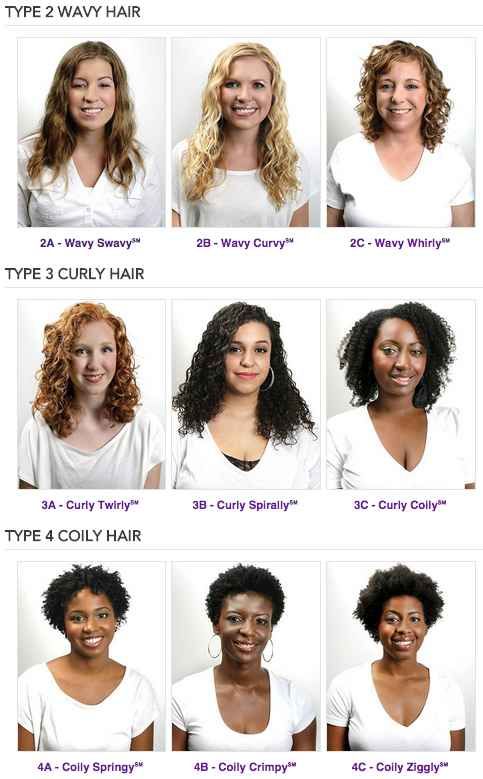
Click here to find out all of the curly hair types and see which one best fits you. It’s important to know which hair texture you have – even if it means you have a few different types – so that you can find products which work for you.
Lengths – If you’re growing your hair out, you will most likely come across these terms online:
- Armpit length
- Bra Strap length
- Waist length
- Tailbone length
As you’ve probably guessed by now, these terms are used to indicate which part of your body your hair reaches to. For curlies, this is when we stretch out our hair and measure it against our body. Some women like to draw lines on a tshirt to measure how much their curls have grown, like this:
Porosity – is the percentage of empty space that can contain fluids. In terms of hair, this refers to how well your hair can asborb moisture – water and products.
High porosity – your hair absorbs water and moisture like a sponge. High porosity means your hair is able to absorb a lot of moisture easily. Products don’t simply sit on your hair, but rather penetrate through it quickly and fully.
Low Porosity – your hair’s cuticles are on the tighter end, so your hair can’t absorb water and moisture as easily. You may need to keep the product (let’s say, a mask or oil) on your hair for longer for it to penetrate through the hair. Water and small doses of heat can be used with your products to allow it to seep into your strands better. Check out the Squish to Condish Method in the Styling section (below) to see how you can use water and conditioner to add moisture to low porosity hair.
Normal Porosity – Your hair can absorb moisture pretty well but may need some heat or assistance to absorb products fully.
So how do you find out what type of porosity your hair has? The most famous test you can do is one with a glass and water. Take a clean strand of hair which has already shedded. Get a see-through cup and fill it with distilled water. Then, place the hair into it and see what happens. After a minute or two, your hair should have either fallen to the bottom of the glass or stayed floating at the top. If it floats to the bottom quickly, your hair is high porosity. If it floats slowly it is normal porosity. If it stays on the top your hair is low porosity.
Here are three tests you can try to find out:
Treatments
Apple Cider Vinegar – Yes this belongs in your kitchen… but that doesn’t mean you can’t use it on your hair too. Dilute it with water and it’s a great pre-poo or even final rinse treatment you can use for a natural way to soften your curls. Leave on for a minute or two and you’re set.
Here’s a tutorial:
Deep Condition – this is when you add a mask or oil into your hair and allow it to seep into the hair thoroughly. Usually done over several hours or overnight, this can moisturise your hair and bring back life to your curls when they’ve been dry and limp.
Moisturising oil vs Sealant – Though natural oils are incredible, they each have different uses. Moisturising oils (like olive and coconut) nourish the hair. Sealant oils (like castor and sweet almond) lock in the moisture already there, adding shine.
Oils – a godsend! I would not have healthy long hair if it wasn’t for oils. By using cold pressed organic oils (such as olive, coconut, jojoba, castor just to name a few) you can add health and shine to your hair. Applying oils to your scalp will help nourish your scalp and aid in hair growth.
Pre-poo – the application of a treatment (can be oils, a mask etc.) before you wash it. You can keep the treatment in your hair for 30 minutes or an entire day before you wash your hair. This helps protect your hair when you end up washing it, so your hair isn’t stripped of all its wonderful natural oils.
Rice water – Okay so now you’re probably thinking we’ve definitely lost our minds. But hear me out. Because of its protein-density, rice water can be great for adding strength to your strands and it’s super-easy to make. Be careful though, too much protein can be damaging.
Here’s a great tutorial by YouTuber Lana Summers on how to do rice water treatments in your hair:
Styling
Curly girl method – a method of curly care popularised by legendary curly girl pioneer, Lorraine Maassey. Basically, you avoid shampoo, heat, combs and brushes, sulfates, silicones and other drying ingredients. Conditioner and gel will be your best friend!
Diffuser – an attachment to your hair dryer which can make your curls pop and bounce even more. Basically the heated and techy version of squishing.
Gel cast – this is when you use gel products on soaking wet hair as a leave-in. When your hair dries the gel with fuse on your hair forming a crystalised layer on each curl, leaving hair super defined and frizz-free.
Laura routine – Curly sister Laura showed many of us how to make the most of our curls. After co-washing your hair, flip your hair upside down and put LARGE amounts of conditioner in your hair using the praying hands method. You can always squish (make sure your head is still upside down!) and really make sure the conditioner is saturated all over your hair.
Leave-in – normally a leave-in conditioner or cream, a product used to moisturise and style the hair after it’s been washed.
LOC method – the Liquid, Oil, Cream method. Yup, you use each of these components on your hair after a wash in this order for beautiful frizz-free curls. This is a really effective way of moisturizing your hair and keeping it moisturized until the next time you wash your tresses.
Plopping – instead of using a towel which could cause frizz, many people opt for an old t-shirt instead. Lay your tshirt out onto a flat surface, and gather all of your hair in one place. When your head is flipped over, wrap the t-shirt around your hair and wait as long as you would a hair towel. This not only helps remove moisture from your your hair without rubbing but also has a scrunching effect on your curls, making sure they’re defined. See below for a tutorial
Praying hands – place your hands the way you would if you were praying and slide product onto your hair this way.
Protective styles – usually in the form of braids or buns, protective styles can help prevent your hair from damage when you sleep, in the cold, and from basically everything and anything. I like to wear my hair in a loose bun on the top of my head when I sleep, so I don’t wake up with a ruffled mop in the morning.
Scrunchies – don’t use those skinny hairbands that break when you try to fit your curls in them. Scrunchies are cute, comfortable, and non-damaging.
Scrunching – a technique used especially when the hair is damp from being freshly washed. You just tip your head upside down, get your palms, and scrunch your hair from the bottom to the top.
Scrunch out the crunch – add your gel to your hair after it’s been washed and DO NOT TOUCH HAIR until it’s COMPLETELY DRIED. I know that’s almost impossible for us (especially as our hair takes forever to dry), but we’ve got to try. Once our hair is completely dry, we can scrunch for volume and to get our hair feeling soft instead of crunchy from the gel. The wonder of this method is something you can only realise after trying it. We promise no 80s gel perms.
Shaking – a technique used to allow curls to be defined after it’s been washed. Add your leave-in products and simply shake your head about (headbanging to Green Day is my recommendation). Shake and let your curls do their thing.
Rake and shake – after freshly washed hair when hair is still wet, add leave-in products and separate your hair into small sections. Take a small section and comb out the section with your fingers, stopping before your hand goes beyond the end of your hair. Continue to hold your hair in this position and shake. Let go to find your curls defined.
Squish to condish – (seriously, who comes up with these names?) As the name suggests, this is when you squish conditioner in your hair in the shower. This allows your curls to be super defined when they dry.
Shingling – though this sounds like a 90s dance move, this is actually another styling method. Take your freshly washed damp hair and detangle it. Section off your hair into workable sections and put leave-in products in. Then, taking that same section, individually seperate each curl from the bulk of hair in your hands. By seperating each curl you’re making sure your hair is tangle free, super defined and bringing out your own unique curl pattern. Here’s a tutorial:
Brands and Products
There are at least two very curly girls at healthista HQ including our editor so we have tested a lot of curly kit. We love all of these products so please please please for the sake of your natural curly hair give them a go.
DevaCurl – a favourite and holy grail in so many curly sister’s lives, this brand is sulfate, silicone and paraben free. We recommend the famous Ultra Defining Gel [£22] as a syling product after you’ve washed your hair. It’ll leave your curls frizz-free and defined.
Shea Moisture – a personal favourite of mine is Shea Moisture. I use their Curl Enhancing Smoothie [£12.99] religiously. This brand has everything you’ll ever need for your hair from shampoos to conditioners and every styling product in between. The Raw Shea & Cupaucu Frizz Defense line hydrates hair and smells so good too).
Ouidad – with the motto and motive being ‘let curls be curls’, we couldn’t agree more. we recommend the Advanced Climate Control Defrizzing Conditioner [£41.56] to protect your hair from the weather and to keep your locks moisturised.
Boucleme – using fair trade ingredients wherever possible, Boucleme are helping the lives of people whilst also the lives of our curls. Their vegan and eco-friendly beliefs are truly inspiring, as well as their Hydrating Hair Cleanser [£15-£20].
Tresemme – now Tresemme doesn’t have a completely silicone and sulfate free line but their Tresemme Perfectly Undone Weightless Silicone Free Conditioner [£4.97] has won the hearts of many, including Rochelle Humes and Laura Marie Smith (above) who actually use this as a leave-in.
Cantu – affordable, with wonderful tropical scents and easily found at your local Superdrug or Boots, Cantu products are sulfate free, silicone free and cheap. I use their Sulfate-Free Cleansing Cream Shampoo and conditioner when I need a deep clarifying wash. This stuff really takes away all of the product build-up in my hair when my hair really needs a deep clean. The Daily Oil Moisturising Cream is THE biz.
Aquis – this brand is famous for their great quality microfibre towel [£35] with cute styles and colors for every need available. This towel makes it easier to go heat-free because it’s so absorbant and damage free.
Kerastase – Kerastase Curl Ideal line is perfect for curly girls. Their Curl Ideal mousse [£19] and cleansing conditioner [£29] will bring a clean and healthy bounce to your curls. Along with Shea Moisture, these are our editor’s all-time favourites.
On top of these amazing brands, you can try oils. Most of us have olive oil in our ktichen. As long as it’s extra virgin, you can warm it up a little over hot water in a bowl, and gently massage it into your hair and scalp. Coconut oil (make sure it’s cold-pressed) is also a great alternative. Though it can cause dryness for some curly girls, others claim it’s their saviour. They’re cheap and natural, and if there’s one product you can buy it should be an oil.
Extra
Big chop – when you snip off many inches of damaged hair in order to grow out healthier locks. Sometimes we have to say goodbye to our strands so they can grow back stronger. It’s painful, I know.
Frizz Control – our biggest nightmare and one we go through a lot, unfortunately. This is of course the elimination of frizz (through treatments and other such methods).
Long Hair Community – a website where there are posts upon posts from women like you and me all talking about EVERYTHING hair.
Natural hair – hair which hasn’t been chemically treated or straightened. Normally referred to those of African/Caribbean descent
Silk pillowcases – if you wanted added protection to your curls when you sleep, a silk pillowcase will prevent frizz and breakage.
(credit curly hair handbook)
For more keywords and the BIBLE every curly girl should own, get yourself a copy of The Curly Girl Handbook [£7.85] here
NaturallyCurly.com is also a fantastic website you definitely don’t want to miss out on.
5 Naturally Curly Hair accounts to follow
@style_dose is a curly girl who flaunts her curls all over Instagram. She shows us her favourite hair products and tests out new products for us to see.
The one and only Laura Smith who taught us the importance of working conditioner into our hair with water and squishing to condish, not only gives us tips on YouTube (usernme Laura Smith), but her bouncy curls are super enviable, as we can see on her Instagram @laura_marie_smith
Another YouTuber Ayesha Malik also dedicates her videos to giving us curlies more tips and tricks. With over 125000 subscribers, she inspires more and more people to embrace their curls.
Hazel Goddess on YouTube tried any product you might be considering to purchase. Reviewing them and giving tips on how to style curly hair, you NEED to watch this channel.
Curlynikki.com is a revolutionary blog where Nikki Walton claims to provide a ‘hair therapy session’ online. And I would attest to that. With many personal experiences and motivational posts, if you were struggling with embracing your curls, this website may be able to change your mind.
Penny Tovar is bloody hilarious. With her jokes and sassy personality along with super informational curly hair tips, you’ll honeslty be missing out if you don’t subscribe to her right the second. She also does dumb stuff to her hair to show us… how to NOT do our hair. Thanks, Penny.
More Healthista Content
17 best products for curly hair – from two Instagram natural hair superstars
Why more women are putting down the straighteners and embracing their natural curls
11 best hair masks for dry, damaged and frizzy locks
8 best products for curly hair
Like this article? Sign up to our newsletter to get more articles like this delivered straight to your inbox.



